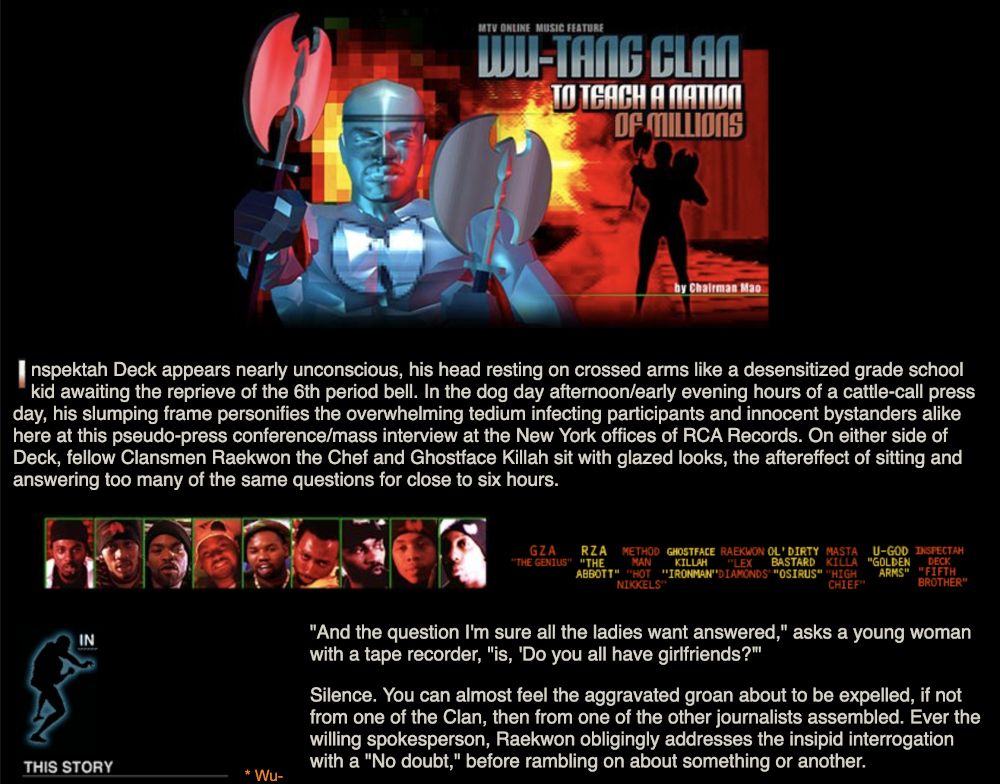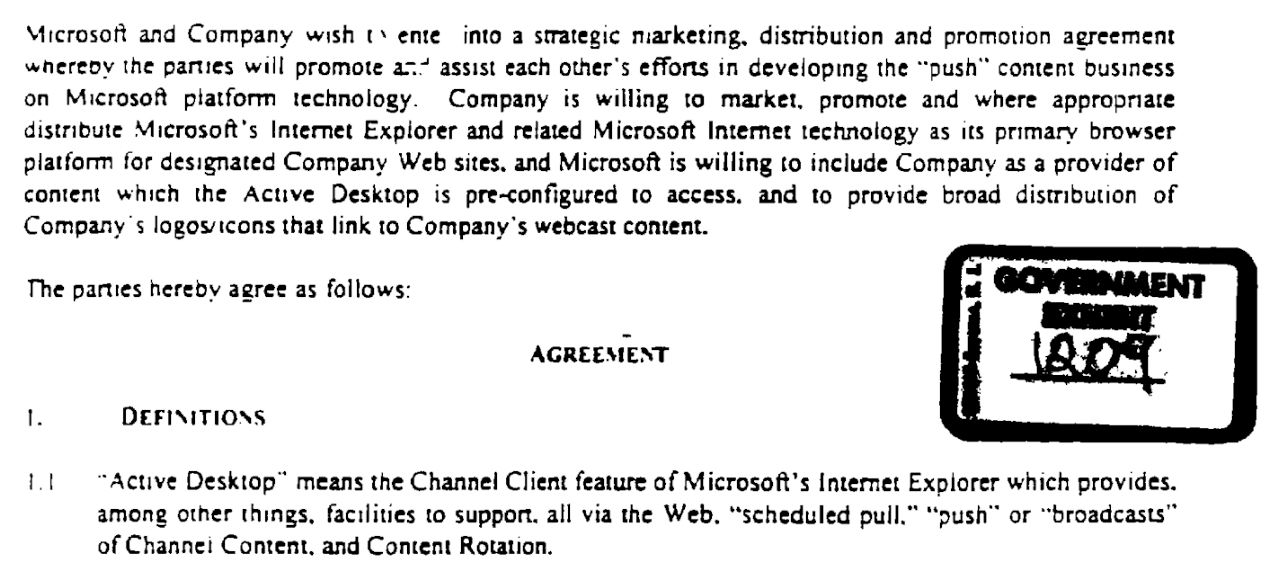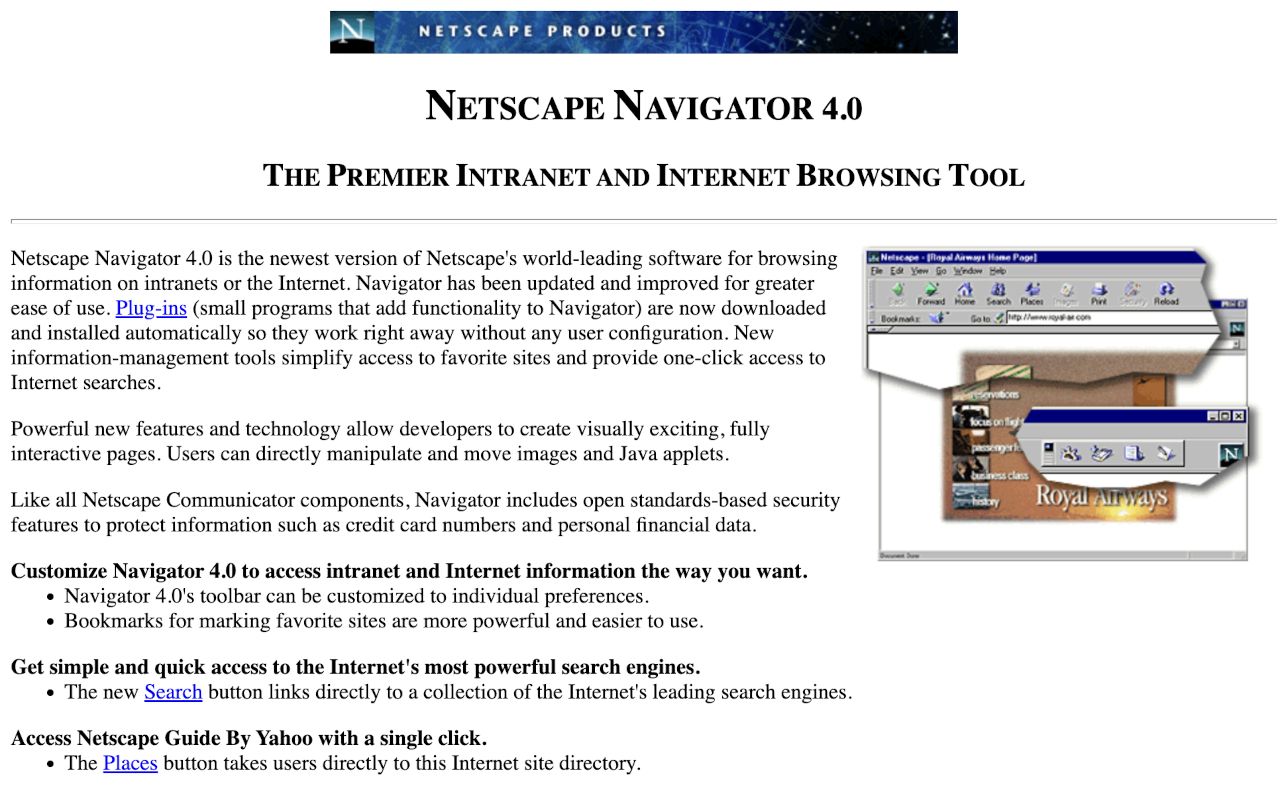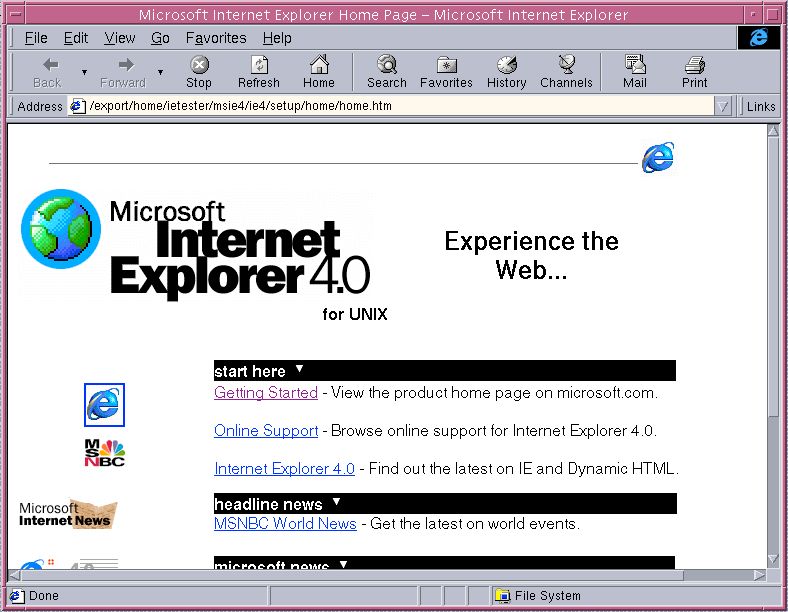Best Experienced With: MTV.com and the 90s Browser War
MTV's website in 1997 was a hodgepodge of technologies: Java, JavaScript, frames and more. The quality of your user experience depended on which browser you used: Netscape or IE.

Part of the reason it was so difficult for both digital music and video webcasts to gain traction on the web over 1997 was the fickleness of the underlying software: the web browser. Throughout the year, a host of technical and business decisions were made by the browser companies and website owners that impacted user experience in a negative way.
MTV’s website was a prime example. On May 3, 1997, Billboard ran a story about MTV’s latest redesign. “The newly revamped World Wide Web site for MTV contains a heavy amount of original music content and a unique Web browser design,” noted the article. But it warned that Netscape Navigator users “will find that some content is inaccessible.” Some of the site’s best content, Billboard continued, was “designed exclusively for Microsoft’s Internet Explorer browser.”
Sure enough, MTV.com had a “best experienced with” link on its homepage, with an Internet Explorer badge directly below. This was a familiar sight on many web pages during this time — although depending on the site, the badge could be either Microsoft IE or Netscape Navigator.

John Musser was MTV Interactive's director of software development at this time (later, in 2005, he founded a tech blog called ProgrammableWeb — at which point I got to know him personally). When I asked him why MTV.com had the “best experienced with” IE sticker in 1997, he didn’t recall exactly but suggested it may’ve had more to do with business deals than technical reasons.
“I do know that during that 1997-1998 period, we were part of that "Push" era of the web, where sites pushed content to browsers,” he said. “Given my role at MTV, I personally flew to Redmond (my first trip to Microsoft/Seattle), where our teams were jointly preparing a custom CD-ROM and content as part of promotion for the next IE. Lots of big media companies were involved — Disney, ESPN, MTV, etc. We had a tight deadline since it needed to be mastered onto the discs by some date. We were then in the main default menu of links in the browser as well.”

Push and Active Channel
Indeed, there was a business quid pro quo: from July, MTV favoured Microsoft’s browser in exchange for being a default link in IE. We know this because when the United States government began its antitrust trial against Microsoft in 1998 — primarily because of IE’s bundling into Windows — the partnership with MTV in 1997 was among the evidence the DOJ produced. In a document dated July 25, 1997, Microsoft and MTV agreed to “promote and assist each other’s efforts in developing the “push” content business on Microsoft platform technology.”

This agreement was made in advance of the October 1997 release of Internet Explorer 4.0. As part of that release, Microsoft promoted its “Active Channel” technology, a proprietary way to push web content to users. As the name suggests, Microsoft wanted Active Channel to be akin to a TV channel. The idea was that users could subscribe to different types of Web “channels,” just like they subscribed to television networks like MTV.
“With one click, users can subscribe to Active Channel content available through either the Channel Bar, a part of the Internet Explorer 4.0 desktop that provides quick access to more than 30 preconfigured premier Active Channel providers, or in the Microsoft Active Channel Guide, which allow users to browse hundreds of the latest channels, view multimedia previews and read descriptions of channel content,” stated the media release.

MTV’s Use of Java
Despite the deal with Microsoft, the technical foundation of MTV.com throughout 1997 was varied. Even after the IE-focused redesign in May 1997, MTV’s website had a hodgepodge of Java features in it — and Java was owned by Sun Microsystems, which had partnered with Netscape. That’s because prior to the Active Channel arrangement with Microsoft, MTV had independently attempted similar functionality using Java technology.
As Wired later reported, in the Spring of 1996 MTV had launched “a Java-rich toolbar and standalone Java desktop product,” with the intention of using Java applets “to stream video and sound.”
“In those days, we were like a lot of sites that were experimenting with all this 'cool new tech', whether video, Flash, Java applets, etc.,” Musser told me. “As you know, some worked and some didn't. I remember how […] it became very clear just how intrusive Java applets were and making them part of the navigation on every page wasn't a good user experience.”

Java worked in both IE and Navigator, so the Microsoft deal didn’t preclude MTV from continuing to use Java — it just meant they ended up using both Java and Microsoft technology, for different parts of the site. This led to a user having to make yet another choice in order to view MTV.com: you could either view the highly interactive Java version of the web site, or a “decaf” version that used HTML frames for navigation.
MTV continued the rather strained coffee metaphor to guide the user’s decision: “You want your MTV Online and you want it fast. The frames version serves it up quick and hot the way you like it. Not as hot as Java, but great for those into decaf.”
So you were not only being forced to choose between different browsers, but sometimes between different versions of the same website as well! Again, this was common among large websites at that time.

By the end of 1997, MTV had decided to scale back its use of Java. It would henceforth be used “much more sparingly, such as for games or much more appropriate purposes,” Musser explained to me. As he told Wired in December 1997, “we are going to ... try to make [Java] a little more focused and not so global.”
JavaScript Complexity
The confusion over how and when to use Java was symptomatic of a growing complexity on the Web. Even JavaScript, which had originally been designed as an easier alternative to powerful programming languages like Java, was not immune to this trend.
JavaScript, which was awkwardly renamed ECMAScript as it became a web standard in 1997, was a key glue language for both Netscape and Microsoft. But, frustratingly, the two main browser companies diverged in how it was implemented. In addition, Microsoft had debuted an entirely different scripting language the previous year: VBScript, derived from one of the company’s key programming languages, Visual Basic. Despite JavaScript now being a web standard, Microsoft wanted to give developers a scripting option that was more optimised to Windows and IE environments. Needless to say, it added fuel to the fire in the browser war.
When Netscape Navigator 4.0 launched in June, it came with a new version of JavaScript (1.2). One of the features introduced was a “layer” object, which Netscape described as “a positioned block of HTML content.” The idea was that you’d be able to modify that block of content and place it anywhere on a web page.

But when IE 4 was released in October 1997, it became clear that Microsoft had edged ahead of Netscape in how it utilised scripting. IE4 was the first browser to demonstrate a full-page object model (what would later be named the Document Object Model, or DOM) — Navigator 4 had a limited object model by comparison.
Microsoft coined a new term to express the advanced functionality it was striving for on the web. DHTML, or Dynamic HTML, was essentially a combination of HTML, JavaScript (or VBScript), the newly released CSS standard, and the beginnings of the DOM.
You can read more about the technical aspects of DHTML in a separate Cybercultural post: 1997: The Year of DHTML

Browser Incompatibility
Despite IE4’s superiority, there was a lot it either didn’t support yet (e.g. CSS borders) or that was non-standard and unique to IE (e.g. the infamous Marquee element, used to insert a scrolling area of text). Likewise, Netscape had its own compatibility issues.
A lot was achieved over 1997 with scripting and what it helped unlock in terms of “dynamic” functionality on a web page. But at the time, as MTV.com demonstrated, JavaScript and VBScript were still both overshadowed by more powerful web programming languages — particularly Java, but also Perl (the dominant language for creating CGI scripts, which still powered many dynamic websites).
In addition, Microsoft had Active Server Pages (ASP), a server-side framework for building dynamic web pages in Windows environments — “active” was Microsoft’s catchword for anything interactive.

So options were plentiful for developers, but that meant an increased divergence in the type of web applications being built. If you used Microsoft’s ASP environment and favoured VBScript, chances are you were building web apps that only worked on IE. The upshot for web users was that browser incompatibility became an increasing source of frustration over 1997. When people visited a website such as MTV’s, or David Bowie’s, they often had issues.
“Every time I go to www.davidbowie.com, Netscape crashes just as the cool graphics are showing up on the screen,” complained an alt.fan.david-bowie user in early 1997. Another user responded, “What I've found I had to do at the Bowie website is turn off the Java and JavaScript (check the boxes under Preferences/Security) for some pages, and turn it back on for others.” Although, that commenter admitted they were still on Netscape 2.01.
This was yet another part of the problem: it took a while for the latest browser versions to filter down to the masses.
Postscript: In June 2024, the present owner of MTV, Paramount Global, shut down MTVNews.com and removed its archives from the web. The Internet Archive did a sterling job to save what it could, but much of MTV's website content from 1997 no longer exists.
Buy the Book
My Web 2.0 memoir, Bubble Blog: From Outsider to Insider in Silicon Valley's Web 2.0 Revolution, is now available to purchase:
- Paperback, US$19.99: Amazon; Bookshop.org
- eBook, US$9.99: Amazon Kindle Store; Apple Books; Google Play
Or search for "Bubble Blog MacManus" on your local online bookstore.